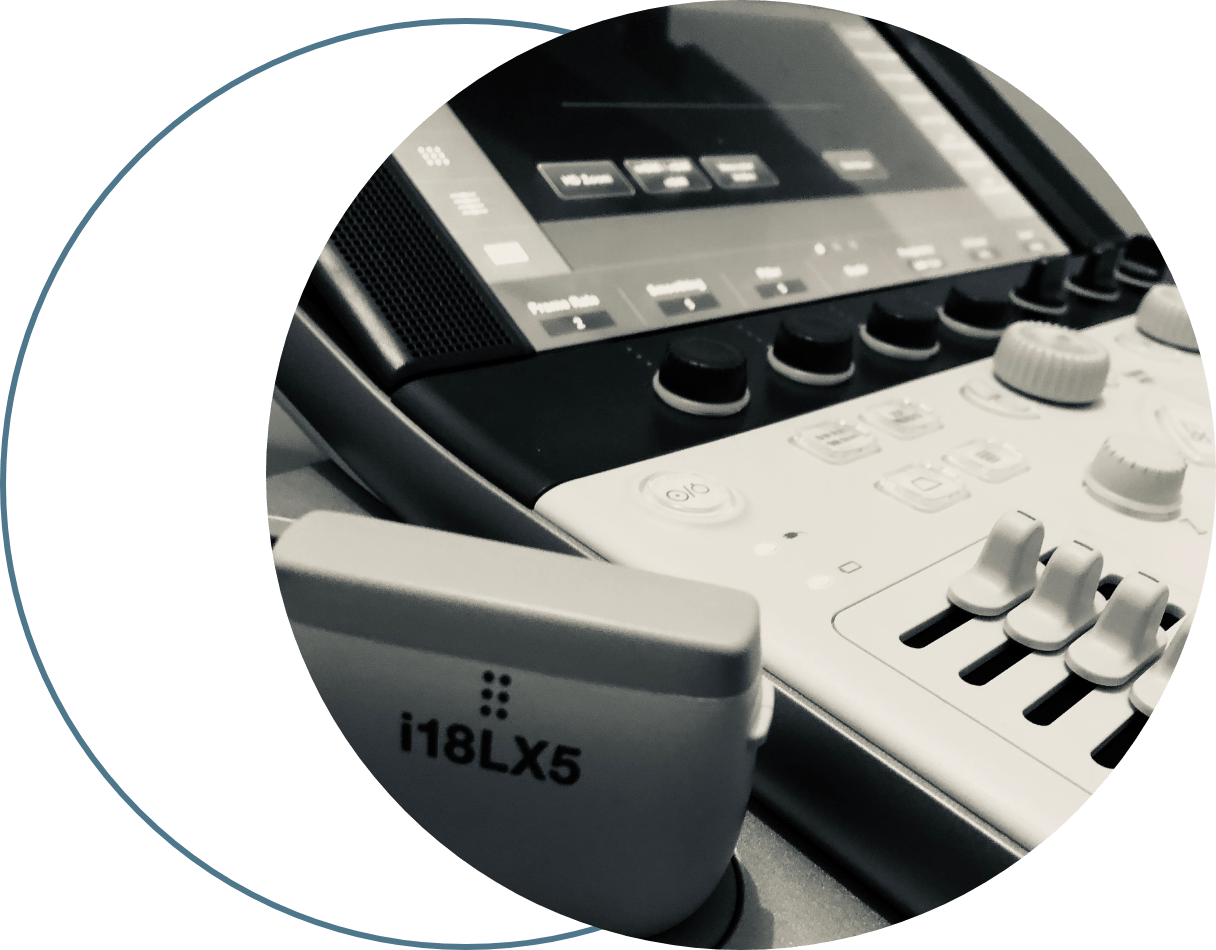Neurology and Nerve Ultrasound
86
page-template-default,page,page-id-86,bridge-core-3.0.5,qode-page-transition-enabled,ajax_fade,page_not_loaded,,qode-title-hidden,qode_grid_1300,footer_responsive_adv,qode-child-theme-ver-1.0.0,qode-theme-ver-29.2,qode-theme-bridge,qode_header_in_grid,wpb-js-composer js-comp-ver-6.10.0,vc_responsive,elementor-default,elementor-kit-7,elementor-page elementor-page-86
Neurology and Nerve Ultrasound
Disease spectrum and fields of application of neuromuscular ultrasound.

Neurological diseases
Below you will find some examples of neurological diseases we regularly treat in our practice
- Peripheral nerve diseases: polyneuropathies, carpal tunnel syndrome, ulnar neuropathy (ubitaltunnelsyndrom (cubital tunnel syndrome), traumatic nerve injury (neuroma), thoracic outlet syndrome, brachial plexopathy, lesions of cerebral nerves like accessory nerve, peripheral nerve sheath tumors (schwannoma, neurofibroma, malignant peripheral nerve sheath tumors) etc.
- pain
- headache (migraine, tension headache, cluster headache) and rare headache forms
- vascular diseases and stroke
- multiple sklerosis and inflammatory diseases of the central nervous system
- sleep disorders (restless leg syndrome, obstructive sleep apnoea)
- neurodengenerative diseases: dementia etc.
- amyotrophic lateral sclerosis
- movement disorders: parkinsons disease, tremors, ataxia
and many more.
Ultrasound of nerve and muscle
High resolution ultrasound is a painless technique to visualize peripheral nerves. It is used in addition to clinical symptoms and EMG to obtain informations about the morphology and localisation of a disease for treatment optimisation.
High-quality results depend on the experience and skills of the examiner as well as high-quality, up-to-date medical equipment. Dr. Borchert uses high-end ultrasound systems of the latest generation with probes up to 24 MHz. (Certificate Muscle- and Nerve Ultrasound, DGKN/DEGUM since 2013).
What does a nerve ultrasound show?
- The nerve ultrasound can generate valuable additional information prior and after a surgery, i.e. the type, severity and location of damage
- Anatomical conditions and variants can be made visible to the surgeon before
- surgery
- In the investigation of nerve injuries in children, nerve ultrasound is particularly valuable because it is painless and, in contrast to electrophysiology, which is often not tolerated by children, it can give early information about the condition of the nerves
- In case of damage to the brachial plexus such as thoracic outlet syndrome or nerve torsions after plexus neuritis / neuralgic shoulder amyotrophy, the ultrasound provides important supplementary information to MRI and CT imaging
- In Bottleneck syndromes such as carpal tunnel or cubital tunnel syndrome (sulcus ulnaris) but also other compression syndromes of the arm and leg nerves, the extent and cause of the damage can be shown
- Nerve tumors can be assessed for size, extent, vascularization and morphology by using ultrasound
- In the case of traumatic nerve injuries, the neural ultrasound provides early information on the type, severity and location of the damage
- Skin nerves can also be visualized with our technology and injuries or compression sites can be localized (N. cutaneus femoris lateralis, N. saphenus up to the infrapatellar branches after knee surgery, etc.)
- Diseases of the nerves of the foot, such as Morton’s metatarsalgia, can be detected in nerve ultrasound
- In the differentiation of neuropathies (immune neuropathy, hereditary neuropathy incl. Screening of related persons), the ultrasound of the nerves is an important addition to electrophysiology
*DEGUM German Society of Ultrasound in Medicine DGKN German Society of Clinical Neurophysiology and Functional Imaging
